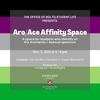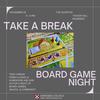Read this at the Harvard Crimson.
“I just wanna have enough time to change before my date,” I tell my roommate.
“What do you mean? This is a good date outfit.”
“Yea. I’m just trying to go for something a little more queer.”
I acknowledged the weight behind it as I looked down at my sundress feeling a little ashamed that my femme-phobia still seeps in occassionally no matter how much I try to push it down.
I came out as queer towards the end of my sophomore year of college after ignoring all the signs for so long. I already felt behind as most of my friends had been out for years. I finally wanted to be out and proud, but this proved difficult as I continued to be read as straight.
I remember the many times I considered cutting my hair short before realizing the only reason I would want to do that was to look less straight-passing. Then I would wonder if men would still find me attractive if I did so. I felt the invisibility as I sought more validation for my queerness, since the first thing I learned about bisexuality was its erasure.
My bisexuality felt like strike one in my queerness. Maybe I could at least make up for it by looking more queer — but what did that mean?
A year ago, I bought the black casual dress shoes I’m wearing as I write this. I remember excitedly showing my friends my new “gay shoes.” I think of the flannels I’ve added to my closet over the past few years. The tattoos and piercings I’ve added to my body to make me feel more at home in it. I’ve felt more comfortable in who I am through these forms of self-expression, but I recognize that there's also a part of me that likes it because it makes me look more stereotypically queer.
I think of the undercut I got re-done after letting the previous one grow out. I think of the chop back to my “bisexual bob” haircut after I felt my hair was getting too long.
I sought validation and felt satisfied when I got it.
This past summer, I was overjoyed to find myself in a setting with many other queer people and people of color planning on going into academia. I felt like I could find a space for myself and it brought me a sense of accomplishment to notice that I felt more settled in my queerness after having been out for over a year.
I felt a kind of membership in the BGLTQ community that I hadn’t felt the previous summer as I joined in on queer jokes and was able to reference my own experiences. I could join in even while wearing bright lipstick, winged eyeliner, and hoops. But over the following days there were more subtle reminders that I still didn’t quite fit as much as I hoped since my bi femme-ininity continued to be misread.
“Those are some really good lesbian pants!” another queer woman complimented me on my high-waisted mustard pants. She knew I was queer from a previous conversation in which I had intentionally not mentioned the men I had dated for fear of being misread as straight. But by not doing so, I was misread as a lesbian. It’s often forgotten that you might be neither.
Another reminder of my femme-ininity came over dinner the next day as we joked about starting a queer clothing line with a larger group. Another queer woman suggested we include lots of button-downs, pants, and overalls. I noticed the butch focus as they tried to list what kind of clothes could be included in this line. I felt more excluded as I suddenly became more aware of the pink dress I was wearing.
I recognize my struggles with my own internalized femme-phobia as I think back to my “gay shoes” and other articles of clothing in my closet that I labeled as more queer in relation to the rest of my clothes — my dresses, rompers, and crop tops. In designating some articles of clothing as queer and others as not queer, we suggest it is the clothes themselves that make us queer.
While I expect to continue having my sexuality misread or seen as a phase, I now find more internal validation in my queerness so that I no longer feel like I have to dress a certain way to send a message. All my clothes are queer because they are my clothes. All my clothes are queer because I make them queer.
Laura S. Veira-Ramirez ’20, a Crimson editorial editor, is a joint concentrator in History and Literature and Studies of Women, Gender, and Sexuality in Leverett House. Her column appears on alternate Mondays.





